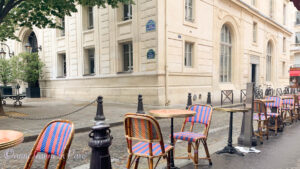
Saint Germain des Prés: nothing but classics
Saint-Germain-des-Prés, one of the most iconic and elegant neighborhoods in Paris.
Famous for its cafés, artists, and literary past.A mix of quiet charm and vibrant street life.

Saint-Germain-des-Prés, one of the most iconic and elegant neighborhoods in Paris.
Famous for its cafés, artists, and literary past.A mix of quiet charm and vibrant street life.